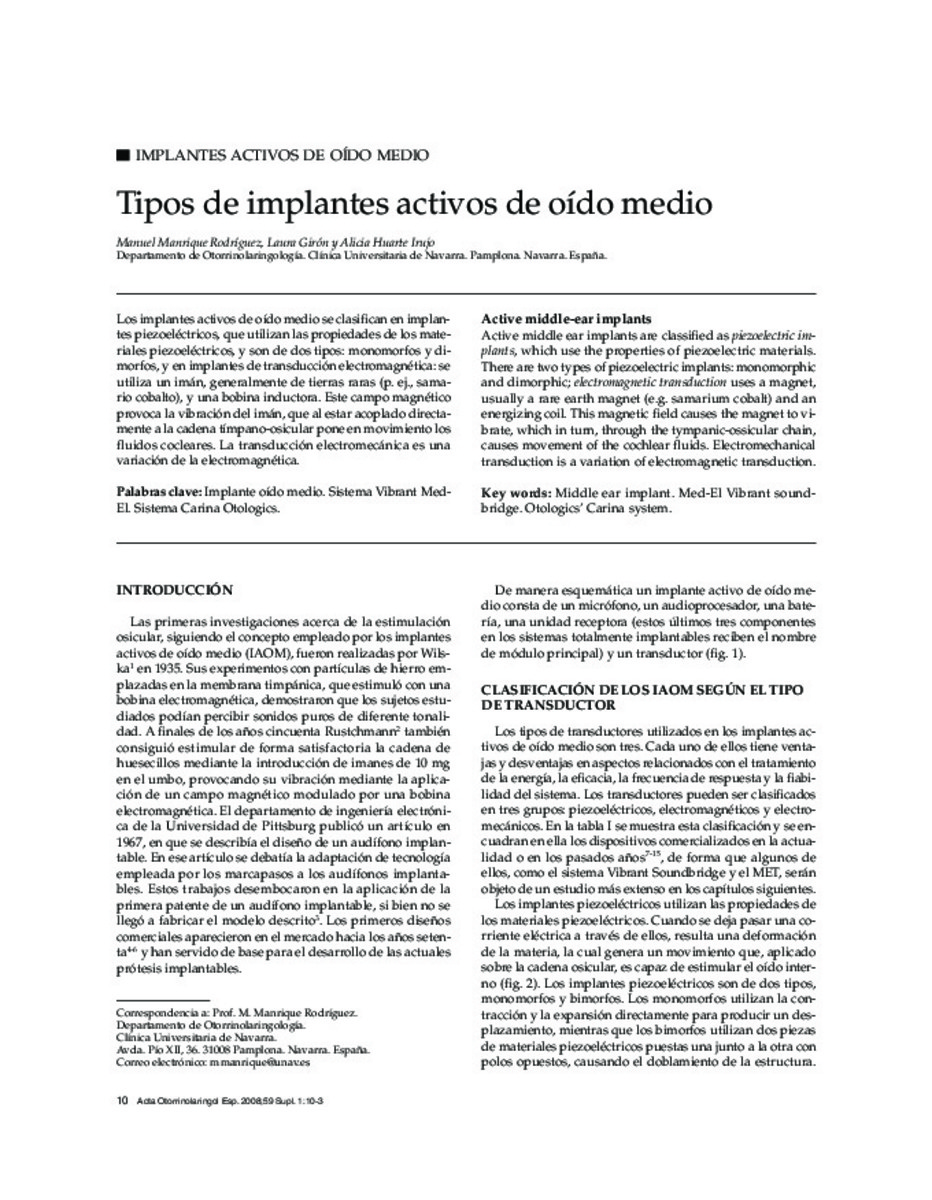Full metadata record
| DC Field | Value | Language |
|---|---|---|
| dc.creator | Manrique, M. (Manuel) | - |
| dc.creator | Giron, L. (Laura) | - |
| dc.creator | Huarte-Irujo, A. (Alicia) | - |
| dc.date.accessioned | 2012-06-15T11:06:38Z | - |
| dc.date.available | 2012-06-15T11:06:38Z | - |
| dc.date.issued | 2008 | - |
| dc.identifier.citation | Manrique Rodriguez M, Giron L, Huarte Irujo A. Active middle-ear implants. Acta Otorrinolaringol Esp 2008 Nov;59 Suppl 1:10-13. | es_ES |
| dc.identifier.issn | 0001-6519 | - |
| dc.identifier.uri | https://hdl.handle.net/10171/22562 | - |
| dc.description.abstract | Active middle ear implants are classified as piezoelectric implants, which use the properties of piezoelectric materials. There are two types of piezoelectric implants: monomorphic and dimorphic; electromagnetic transduction uses a magnet, usually a rare earth magnet (e.g. samarium cobalt) and an energizing coil. This magnetic field causes the magnet to vibrate, which in turn, through the tympanic-ossicular chain, causes movement of the cochlear fluids. Electromechanical transduction is a variation of electromagnetic transduction. | es_ES |
| dc.language.iso | spa | es_ES |
| dc.publisher | Elsevier | es_ES |
| dc.rights | info:eu-repo/semantics/openAccess | es_ES |
| dc.subject | Middle ear implant. | es_ES |
| dc.subject | Otologics’ Carina system. | es_ES |
| dc.subject | Med-El Vibrant soundbridge. | es_ES |
| dc.title | Tipos de implantes activos de oído medio | es_ES |
| dc.title.alternative | IMPLANTES ACTIVOS DE OÍDO MEDIO | es_ES |
| dc.type | info:eu-repo/semantics/article | es_ES |
| dc.relation.publisherversion | http://www.elsevier.es/en/linksolver/ft/ivp/0001-6519/59%20Suppl%201/10 | es_ES |
| dc.type.driver | info:eu-repo/semantics/article | es_ES |
Files in This Item:
Statistics and impact
Items in Dadun are protected by copyright, with all rights reserved, unless otherwise indicated.






